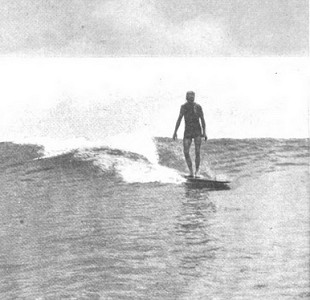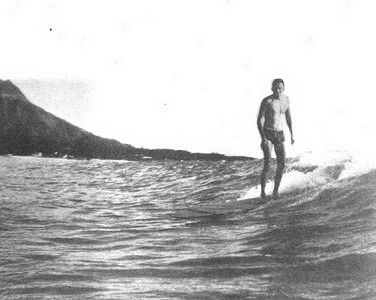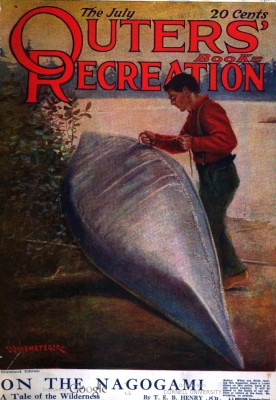
surfresearch.com.au
f. m. davidson : riding old ocean's waves, 1918.
f. m. davidson : riding old ocean's waves, 1918.
|
|
|
|
|
|
 |
surfresearch.com.au
f. m. davidson : riding old ocean's waves, 1918. |
| Page 12 Riding
Old Ocean’s Waves
A Great Summer Sport
By
F. M. DAVISON
ILLUSTRATIONS FROM PHOTOGRAPHS
WHEN I arrived
at Honolulu, Hawaii, my intentions
were.to remain two months.
Having become enamored of the sport of surf-board riding, I remained two years, a devotee to this, the most exhilarating and exciting sport in the world. I was, fortunately, the protégé of David - “Dad" - Center, the captain of the famous Outrigger Club. He and Duke Kahanamoku are the champion surf-riders of Hawaii. Could anything be more glorious on a bright, sunny day than to lie out on one’s surf-board, gazing mauka (towards the mountains); the tropical scene reminding one of an exquisite water color painting. |
 The most
interesting and exciting
way to ride |
| Page 13 little kiddies taking their first lessons in surf-board riding. While learning how to balance and paddle the boards their assistants laugh with joyous derision, as the would-be surfers helplessly wabble about on their boards; until at last they have learned how. It is fun to watch a fat, elderly man with a big “opu” struggling helplessly on his wet, slippery and unruly board, “learning how." After a little practice on the small Cornucopia Surf, near the raft, these novices soon venture out into the big Canoe Surf; proudly confident, they are usually in everybody's way until they have learned to look out for themselves and others. Many women and girls among the tourists get the Hawaiian boys to drag them on their boards, out through the surf, give them a shove and they joyously ride in on the small surf near shore, receiving many a thrill while their proud friends and relatives watch excitedly from the Moana pier and snap pictures of these surfing belles. |
 "The most
exhilarating and exciting sport
in the world” |
 |
Outers’ Book of Recreation Volume 59 Number ?, July 1918. Outer's Book Company, Chicago. Hathi Trust https://hdl.handle.net/2027/coo.31924069291783  |
|
|
|
|
|
|